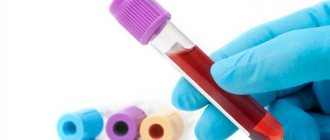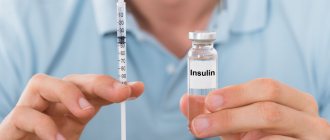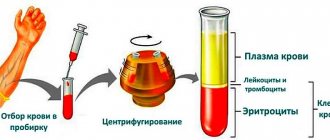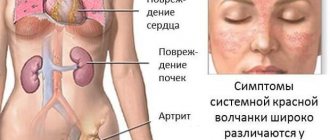Today, more than 380 million people have been diagnosed with diabetes, more than 10.9 million of them live in Russia. It is not always possible to diagnose on time; in 46% of cases the disease remains unrecognized. Self-monitoring is essential for optimal blood sugar control. The results help calculate insulin doses, the amount of sugar in food and physical activity.
The purpose of using a glucometer is not just to control blood sugar levels, but to reduce the incidence of late complications such as damage to the retina, kidneys and nervous system. No less dangerous is the risk of hypoglycemia associated with taking tablets and injectable forms of insulin. This contributes to a high risk of pathology of the heart and blood vessels. Before you buy a glucometer, let's talk about what is important in its use and what problems you may encounter along the way.
Rules for using a glucometer
To ensure accurate glucometer readings, it is important to follow certain rules.
Calibration
Most blood glucose meters require you to calibrate the device before taking a measurement. Don't neglect this procedure. Otherwise, the received data will be incorrect. The patient will have a distorted picture of the course of the disease. Calibration takes just minutes. Details of its implementation are described in the instructions for the device.
Measurement three times a day
Blood sugar measurements should be taken before meals, after meals and before bed. If the analysis must be done on an empty stomach, then the last snack is acceptable 14–15 hours before the procedure. For type 2 diabetes, it is recommended to take measurements several times a week. But insulin-dependent diabetics (type 1) should monitor glycemia several times a day. However, one should not lose sight of the fact that taking medications and acute infectious diseases can affect the data obtained.
Monitoring indicators
If inconsistencies are noted in the device readings, it is necessary to re-test. Results may be affected by insufficient blood from the puncture site and unsuitable test strips. To eliminate the first reason, it is recommended to wash your hands in warm water before the analysis. After the puncture, the finger should be lightly massaged. Do not squeeze out blood under any circumstances.
Expiration date of consumables
Before using test strips, be sure to make sure that they are within their expiration date and have been stored under favorable conditions: in a dry place, protected from light and moisture. Do not touch them with wet hands. Before testing, make sure that the code on the device screen matches the numbers on the test strip packaging.
Correct operation
To extend the life of your glucometer, monitor its condition: clean the device on time, change lancets. Dust particles may negatively affect the measurement results. If there are several diabetics in the family, each should have an individual meter.
Is it possible to take blood from something other than a finger?
Traditionally, blood for testing is taken from a finger or from a vein. In the case of assessing sugar levels, venous is not very preferable. It contains more glucose than capillary, and there is a high risk of incorrect interpretation of the analysis. Therefore, blood for sugar is taken from a finger.
But there are many nerve endings in the fingertip. For many people, piercing is too painful. Therefore, there are high-quality glucometers that include the ability to analyze blood from:
- shoulder;
- forearms;
- shins;
- hips.
It's not that painful to pierce them. However, blood circulation in these parts of the body is slower than in the fingers. Therefore, changes in glucose levels do not always appear in a timely manner according to analyzes from alternative sites.
Decoding the results
When assessing the indicators, it should be taken into account that plasma contains 10–11% more dextrose. The laboratory recommends multiplying the readings by 0.89 or dividing by 1.12.
If the doctor said to take into account the results in plasma, there is no need to multiply or divide. For example, the device showed 5.04, which means blood sugar is 4.5 on an empty stomach and no more than 8.96 2 hours after eating, that is, in capillary blood - 8.0.
The accuracy of the device can be checked in special laboratories; they often overestimate or underestimate the indicators.
Table. Blood sugar levels by age.
- Maximum blood sugar level in diabetes in a diabetic: normal limits
| Age | Fasting mmol/l | After meal | |
| After 1 hour, mmol/l | After 2 hours, mmol/l | ||
| 2 days–4 months 3 weeks | 2,8–4,4 | not higher than 4.6 | 3,0–4,4 |
| 1–5 years | 3,3–5 | no higher than 5.5 | 3,5–6,0 |
| 5–11 years | 3,3–5,5 | ||
| 12-14 years old | 3,3–5,6 | 3,9–7,8 | |
| 14–60 years | 4,1–5,9 | ||
| 60–90 years | 4,6–6,4 | ||
| 90 years and older | 4,2–6,7 | ||
| In pregnant women | 3,3–5,3 | no higher than 7.7 | not higher than 6.6 |
Device coding
This is a procedure on which the accuracy of the results depends. It allows you to bring the device itself and the test strips that come with it into maximum compliance. Older models required manual coding. It was replaced by electronic chips.
The most advanced devices do not require coding. It occurs automatically when the test strip enters the housing. The glucometer reads the code and configures itself.
No Coding technology was developed because it became apparent that most patients were not completing the necessary adjustments. The coding procedure cannot be ignored, as this reduces the accuracy of measurements. As a result, it is not possible to accurately determine the dose of insulin that needs to be administered to the patient.
Blood sugar levels for diabetes
Normal blood sugar readings on a glucometer depend entirely on how much insulin the body produces. Insulin is a hormone produced by the pancreas. The task of the hormone is to control the level of sugar entering the cells of the organs.
It happens that the pancreas does not produce enough insulin or the hormone is no longer able to interact with cells. As a result, hyperglycemia occurs.
Hyperglycemia is a chronic increase in blood sugar levels, which results in diabetes mellitus.
Insulin is responsible for moving glucose from the blood to the organs. In a healthy body, this process proceeds without complaints or obstacles. In a sick person, glucose is not transported to the organs, due to which it continues to be produced and remains in the blood. When the blood becomes oversaturated, it thickens. In this regard, there are difficulties in saturating the organs with oxygen and other nutrients.
One way to suspect the disease is through characteristic symptoms:
- 24/7 thirst
- dry mouth,
- frequent urination,
- weakness throughout the body,
- vision weakens,
- feeling hungry, even after eating.
A more dangerous condition is when glucose levels rise sharply after eating. Under such circumstances, a person is accompanied by symptoms:
- wounds that do not heal for a long time,
- desire to eat, even on a full stomach,
- suppuration on the skin,
- Gums begin to bleed
- weakness in the body,
- reduced performance.
A person remains in this state for up to several years and has no idea that he is sick.
More than 50% of people are unaware that they already have type 2 diabetes.
- Methods for determining blood sugar at home - with and without a glucometer
One way to suspect the disease is through characteristic symptoms:
- 24/7 thirst
- dry mouth,
- frequent urination,
- weakness throughout the body,
- vision weakens,
- feeling hungry, even after eating.
A more dangerous condition is when glucose levels rise sharply after eating. Under such circumstances, a person is accompanied by symptoms:
- wounds that do not heal for a long time,
- desire to eat, even on a full stomach,
- suppuration on the skin,
- Gums begin to bleed
- weakness in the body,
- reduced performance.
A person remains in this state for up to several years and has no idea that he is sick.
More than 50% of people are unaware that they already have type 2 diabetes.
This happens because most patients do not pay attention to symptoms that indicate the development of pathology in the body. To avoid complications, it is recommended to regularly check your blood sugar levels with a glucometer.
By age
Regardless of gender, there are normal values for each age category. The indicator is expressed in mmol/l.
Jumps in glucose are also associated with menopause or an interesting position of a woman.
An important point in the procedure is blood sampling. To obtain an accurate result, it is recommended to follow the following recommendations:
- How is blood sugar measured: units and designations
- come for the test in the morning, on an empty stomach,
- after the last meal, a period of 8 hours or more must pass,
- eliminate stressful situations,
- 2-3 days before the test, do not eat heavy food,
- 24 hours before the test, do not smoke or take medications.
In a healthy body, the normal blood sugar level when measured with a glucometer does not exceed 5.5 mmol/l. If the number increases to 5.9 mmol/l, diabetes is likely to develop. These results apply to capillary blood. 6.1 mmol/l or more in venous blood indicates the development of pathological reactions in the human body.
Table for measuring blood sugar depending on age category.
| Age | Glucose level |
| 2 days – 1 month | 2,8 – 4,4 |
| 1 month – 14 years | 3,3 – 5,6 |
| 14 years – 60 years | 4,1 – 5,9 |
| 60 years – 90 years | 4,6 – 6,4 |
| 90 years or more | 4,2 – 6,7 |
If the doctor doubts the results, he will order a glucose tolerance test.
During the day
If you follow all the doctors’ recommendations, your glucometer readings for diabetes will show values close to normal. Normal in the human body:
- In the morning before meals. 3.6 – 6.1 mmol/l for a healthy person. 6.1 – 7.2 for a diabetic.
- The glucometer reading after eating in the morning is 8 mmol/l. Up to 10 mmol/l for a diabetic patient.
- The normal glucometer reading before bed is 6.2 – 7.5 mmol/l.
If the blood sugar value does not correspond to the table standards and shows below 3.5, you should immediately call an ambulance. This condition causes coma.
The body is unable to cope with vital functions due to a lack of energy in the organs. If left untreated, death is likely.
Results
Checking your glycemic level at home using a glucometer is an integral part of the life of a patient with diabetes. Thanks to this, a diabetic can control his condition, correctly calculate the dose of medication, and take timely measures to prevent critical risks.
The measurement results must be saved to a computer (or recorded) in the “Diabetes Diary”. Analysis of the patient’s records will help the doctor analyze the dynamics and predict the course of endocrine pathology, and, if necessary, adjust treatment tactics.
Against the background of independent measurements, one should not forget about regular visits to the endocrinologist and donating blood in the laboratory. The accuracy of laboratory diagnostics is always higher than that of portable glucometers.
What is total sugar control?
To know how the body reacts to the prescribed diet and medications, you need to conduct careful self-monitoring of sugar concentration. Therefore, the device often takes measurements, namely:
- immediately after sleep;
- before breakfast;
- 5 hours after insulin injection;
- always before meals;
- after any meal after 2 hours;
- before sleep;
- before and after physical labor;
- after stress;
- if you suspect that your sugar has changed;
- in the middle of the night.
All numbers are entered into a notebook. This helps figure out what is causing the sugar spikes.
Clear interface
How to lower glucose levels
To reduce high glycemic levels, you must adhere to the following rules.
- Follow a strict diet. Eliminate fried, smoked, salty and spicy foods from your diet. Reduce the amount of flour and sweets. Include vegetables, cereals, lean meat and dairy products in the menu.
- Do physical exercise.
- Visit your endocrinologist regularly and listen to his recommendations.
- In some cases, insulin injections may be required. The dose of the drug depends on weight, age and severity of the disease.
The World Health Organization (WHO) recommends testing every 3 years after age 40. If you are at risk (overweight, have relatives with diabetes), then annually. This allows you not to start the disease and not lead to complications.
Rating of the best devices
A high-quality glucometer can only be purchased at a pharmacy or medical equipment store that has the appropriate license. There are numerous manufacturers on the market that receive positive reviews. Their ranking is as follows:
| Manufacturer | Popular models |
| Accu-Chek (Germany) |
|
| OneTouch (Switzerland) |
|
| Bayer (Germany) |
|
| Diamedical (Taiwan) |
|
| Bioptik (Taiwan) |
|
| 77 Elektronika Kft (Hungary) |
|
| iHealth (USA) |
|
| CareSens (South Korea) |
|
| Satellite (Russia) |
|
| AgaMatrix (Germany) |
|
Tokareva Lyudmila Georgievna, therapist, medical offices 36.6
THERE ARE CONTRAINDICATIONS, BEFORE USE YOU MUST CONSULT WITH A SPECIALIST











